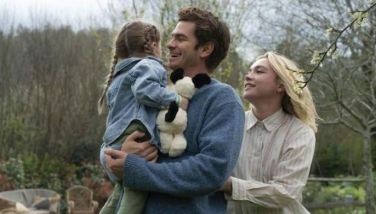A look at gay stereotypes in RP cinema Every sway of his hip, a bruise to an image
He struts in his very loud get-up: fuchsia spandex shorts, an orange ultra-fit top, layered by an equally screaming colored polo tied as a midriff. He sees a group of boys, bats his eyelashes as flirtatiously as possible, and shrieks, “Ay, mga lalaki! (Oh, boys!)” And then he smacks his lips and makes an expression like a lion ready to devour its prey.
This image is pretty much consistent in all of comedian Roderick Paulate’s portrayals of gays in films, and they never fail to elicit boisterous laughter from the crowd. On the surface, it seems like a very innocuous shot at humor, but this and a lot more bruise the gay image. Suffice it to say, Roderick Paulate films do not put the gay image in the positive light as they breed and support gay stereotypes.
Even though Roderick Paulate’s portrayal of the gay man has not been the most ideal, it is worth noting that he has contributed something to the gay community. Prior to his rise as a “gay icon,” gays were just in the periphery—in society and shockingly much so in the movie industry. There were very few Filipino movies that touched on homosexuality, and gay characters were limited to being the best friend of the heroine/leading lady or to being the town or village beautician. Society’s view of gays as a minority or the other couldn’t be more pronounced than in the film industry. For a long time, there had been an absence of a strong gay presence on screen. All that was changed in the late ‘80s to the early ‘90s.
The late 1980’s saw the mercurial rise of Roderick Paulate as a bankable star who capitalized on his ability to portray gays with much gusto. Among his hit films are Petrang Kabayo at ang Pilyang Kuting (Petra the Horse and the Naughty Kitten), Si Goryo at Si Tekla (Goryo and Tekla), Petrang Kabayo 2: Ang Ganda-ganda Mo (Petra the Horse: You’re so Beautiful), etc. As a consequence of Paulate’s popularity, the Philippine gay community has suddenly gotten a voice, a representation in mainstream cinema. However, his representation has drawn flak, for his depiction of gays is deemed by many to be stereotypical.
Although Paulate has given gays the visibility they lacked a few years back, gays have yet to receive acceptance and respect from society. Despite the media mileage, gays have remained the other and their visibility, championed by Paulate, has inadvertently made them the butt of ridicule, thanks to Paulate’s reliance on gay stereotypes for extra cheap laughs. Common stereotypes his portrayals support include “the screaming faggot,” the promiscuous gay, and the hopelessly-romantic-but-oftentimes-broken-hearted gay.
In all his films, Paulate’s gay protagonists come in two volumes: loud and louder. His characterizations always exaggerate “sward speak” or gay language, and he excessively plays with his speech, delivering a nasal and shrill sound. His sentences are punctuated with Oh, diva! [O, di ba? (Isn’t that right?)] and Bongga! (Groovy!) His gay characters are perpetually screaming: they laugh the loudest and they shriek at the slightest provocation. Hence, the stereotype of the “screaming faggot” is cultivated.
Another stereotype Paulate plays so well is the promiscuous gay. At the sight of men, Paulate’s gay characters predictably perk up and incessantly and unabashedly flirt with them. Most of the time, these flirtations result in two things: either his characters are rejected or worse, beaten up black and blue. What’s sickening is that these situations are intentionally played to be funny. The audience laughs at the gay men’s coquettish ways, and they seem not to mind the protagonists being beaten to a pulp because they seem to be bastusin, deserving of whatever beating they get. The depiction that gays always flirt at every chance they get is not accurate and does nothing to improve the gay image.
Not one of the many Paulate characters ends up with a lover. The characters always have prospects, but these prospects almost always have eyes set for the gay protagonist’s younger sister or friend. Nothing much is revealed of the gay protagonists’ love lives except that they hope to be loved and they oftentimes feel the sting of rejection. This portrayal seems to suggest that gays are incapable of forming meaningful relationships.
Despite these underrated portrayal of gays, Paulate’s characters always have redeeming values such as their unconditional love for their families, their generous and kindred spirit, etc. However, these are outweighed by the ridiculous situations and image created for gays. Inadvertently, Roderick Paulate’s characters have become models of what a man or a boy shouldn’t be. Thus, it’s become common to hear comments like, “What are you whining about? You sound like Roderick! Are you gay?”
Indeed, Paulate’s films recognize the presence of gays in the community, but they also reflect and support the startling reality of where the gays stand. As long as gays and their experiences are made fun of, they will always remain the other.
- Latest
- Trending
























